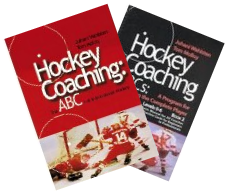Tom , Dean,
Follow up from the conversation Tom that we had earlier today. I was just contacted from coach of the team that I have been doing practice's with. He wants to continue with the Transition games that I ran last practrice as i sad before that was an introduction for them. I suggested to him about only having Two colours and put some competition into this practice , now that they have an understanding of the games. It is a first step and hopefully it will continue. He likes what he has been seeing in the games this past weekend.
I plan on putting these stats together so I can post them at practice for the players to see. Show the importance keeping turnovers to a minimum if possible , and the importance of a good backcheck as a whole unit. NO fly by's do your job and play your role.
I heard a stat once about the percentage on a turnover at or a team failing to get the puck out within 5 ft of the blueline.
Have you guys heard of a stat like this.?
I can't seem to find it. Or maybe I think that I have heard such a stats.
RookieCoach[/p]
RK,
Sounds good! Two colours + competition & accountability = fun!
You might also consider 3 or 4 colours in time... play the King's Scoring Game. (Tom posted a video of John describing this game earlier... in August?) When a team gets scored on, they hustle off and a new team comes on to challenge the goal scorers. The goal scorers dig the puck out of the empty net or goaltended net (or coach spots them a puck if they score on a shooter tutor) so they can quickly transition to attack the opposite end. You play this as a transition game... which means you go end-to-end. You stay on if you score (you can't change) and over time, the scoring team gets fatigued and eventually the chance for mistakes go up as they face fresh legs after each goal.
Today we played this with grade 8's and the first shift lasted 8 minutes before a goal was scored! (We had 2 empty nets at one end and two shooter tutor nets at the other - no goalies). Rules were you must score top shelf or 5 hole on tutors; on the empty nets, you must score "clean" (puck in air and hits mesh - no posts, crossbars, no on ice) and you must release your shot above the offensive zone face off dots. We didn't allow offsides.
We played for 40 minutes, 4 v 4, and the score was only 6-4 at the end! Amazing to see how many kids couldn't hit the net AT ALL / couldn't score "clean" / couldn't raise the puck under pressure! The teacher wanted to change to the lines becasue it was toaking so long to score... NO! Let the game teach the game... the kids need to adapt. Quit trying to "impose your explicit will and desire for everything to always be fair and equal" for Pete's sake (I am being politically correct this time!  )
)
Turnovers 5-7' on either side of either blueline (O or D) is referred to as the "Shit the Bed Zone" or STB Zone. (Sorry for the lack of political correctness here... so sue me!) The old mantra was "get it in deep, don't screw around with it as you attack the O blueline" - or dump it in... and "Get it OUT of your own zone... Don't screw around with it in your own end"! I like to refer to the latter as the "Moose Jaw Breakout" - "High and hard off the glass, boys... whistle it up by their heads!"
Times have changed since 1997 when I was in the 'Jaw!
Now it is more a skill / possession game - thank goodness! Mind you, putting the puck into or just behind the defenders skates, or into an open area to force the defender to turn, or an area where you or your teammate has a higher percentage chance to recover the puck can be perfectly acceptable on the attack... "Risk vs Reward" again.
So far as stats surrounding the STB zone at either end, going either way... would these not have been addressed by Kai's earlier post? I would have to go back and re-read to see...







Eric,
The booklet is "Transition - From Game to Practice" by Erkka Westerlund, 1994. Another one is "Transition - Defense to Offense" by Slava Lener, 1992. Both are available for sale through the Hockey Canada Resource Centre. They are about $20 and I see they 'updated' them for 2010 (which means new pictures on the front... hard to say anything has changed on the inside!) These books are worthwhile, in my opinion.
http://www2.hockeycanada.ca/breakaway/coach-s-library/cbreakaway-ccoachlibrary-p1.html
I also recommend the 1998 and 2001 Advanced II Proceedings - each $34.95.
The rest don't really tickle my fancy. ("40 of the Best" was the one I did with Tom and Mike... but it is DRILLS! ACK What was I thinking back then...!!!!)
Dean
M.Ed (Coaching)
Ch.P.C. (Chartered Professional Coach)
Game Intelligence Training
"Great education depends on great teaching."